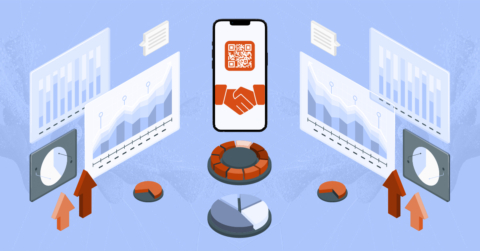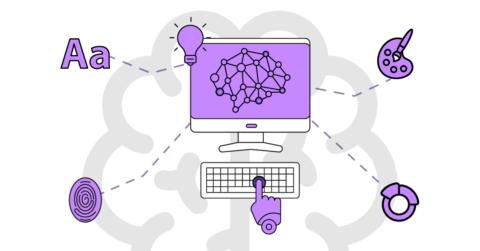
Top 3 Challenges In B2B Content Marketing + Solutions
09/13/24
B2B content marketing
B2B content marketing is a powerful tool that can drive significant business growth. However, there are also a few unique challenges in B2B content marketing you should be aware of.
Today we are covering three of these challenges. We also give you in-depth information on the solution to each one.
But before we get started…
To understand why content marketing is so important in the B2B industry, you first need an overview of B2B as a whole. That’s exactly what you get with our ultimate guide to B2B marketing.
And now, let’s dive into our latest post!
Top 3 Challenges In B2B Content Marketing
Challenge #1: Producing High-Quality Content Consistently
Creating high-quality content on a consistent basis is one of the most daunting challenges in B2B content marketing. That’s because B2B content takes time and legitimate expertise. Compare this to B2C content, which can often be more light-hearted and easier to make. The fact is, B2B content requires in-depth research as well as the ability to communicate complex information in an engaging manner. This is difficult to do consistently.
Additionally, B2B audiences can be more demanding. They expect content that is not only informative, but also highly relevant to their specific needs and challenges. This is a difficult expectation to meet consistently. The result? Pressure on content production teams and inconsistencies in content quality and frequency.
The Solution:
Consistent and quality content creation requires a well-defined content strategy. This is true regardless of the organization, and consistent across both B2C and B2B companies. Making a plan (and sticking with it) is one of the most reliable ways to ensure consistent content production.
As for what this looks like? Start with a calendar. This is where you should outline content topics, deadlines, and the roles of each team member involved in the creation process. Additionally, you should invest in content creation tools. Software like Trello and Asana help you streamline the production process. You might also consider outsourcing certain aspects of content creation to qualified freelancers. This ensures your content calendar stays consistent without overburdening other members of your team.
Challenge #2: Targeting The Right Audience
In B2B content marketing, understanding and targeting the right audience is critical. Buyers in the B2B industry are typically part of a more complex decision-making unit. There are more people involved. The stakeholders making buying decisions often have competing interests, and these decisions usually take much longer.
With this in mind, you start to see how important (and difficult) targeting is with B2B content. With the same piece of content, you need to address the specific needs of multiple stakeholders within an organization. Fail here, and your content fails. This is more likely to result in low engagement, wasted resources, and a missed opportunity to influence the purchasing decision.
The Solution:
Start by listing the demographics, pain points, and decision-making processes of your ideal customers. If you aren’t sure how to get this information, it’s time for market research. The goal here is a clearer understanding of your audience. With enough information, you will be able to identify the challenges and goals of different stakeholders within your target organizations. This will allow you to create one of your most essential assets: detailed buyer personas.
Once you have these buyer personas, it becomes easier to create content tailored to specific needs and concerns. This ensures you are targeting the right audience. Plus, this more detailed image of who you are serving doesn’t just stop at your content creation. With buyer personas, your entire marketing plan changes for the better. Just think about automation. With the right targeting, you can segment your audience and deliver personalized content based on their behavior.
One last note: be sure you continuously analyze the performance of your content. This ensures that it resonates with your intended audience and that your targeting never becomes outdated.
Challenge #3: Aligning Content With the Buyer’s Journey
Let’s be honest: you aren’t just creating content to help your audience. The end goal of good content marketing is all about sales. You want to create more customers with the things you create. Unfortunately, when it comes to B2B content marketing, this can be a complex process.
As we mentioned before, the B2B buyer’s journey is typically longer and more complex than in B2C marketing. Buyers go through multiple stages. This includes awareness, consideration, and decision-making. While these are similar stages all consumers pass through, they take much longer in B2B purchasing decisions. This means that each stage also requires more frequent and in-depth content to move prospects closer to a purchase.
Unfortunately, many B2B companies struggle with this. They find it difficult to align their content with the specific needs of buyers at each stage. This leads to gaps in the buyer’s journey and missed opportunities to nurture leads.
The Solution:
Organization is key here. It’s essential to have a clear idea of what the typical buying process looks like (which your buyer personas from tip #2 can help with). What are all the steps that your prospects take from initial awareness to final purchase? These answers make it easier to map out the usual “buyer journey”, as well as the questions that your prospects will have each step of the way. This is the guiding path for the type of B2B content you should be making.
For example, people at the awareness stage will need to see content that builds the credibility of your offer. Educational content like blog posts or white papers can help here. Further along the journey, your prospects will start to compare your product or service to competitors. This requires a very different kind of content. Try creating an in-depth piece that explains how your own offer differs – and why it’s better. Right before they make a purchasing decision, your prospect needs assurance that they are making the right decision going with you. This is where case studies and product demos do the selling for you.
You should also ensure that your content strategy includes a mix of formats. Different stakeholders will have different preferences for content consumption. Invest in creating a variety of videos, infographics, blog posts and case studies. This will ensure success in your overall B2B content marketing goals.
…
Are you an enterprise, nonprofit or small business looking for help on your website? Give us a shout! We provide a free consultation. Email us at info@lughstudio.com or call us at (718) 855-1919!









